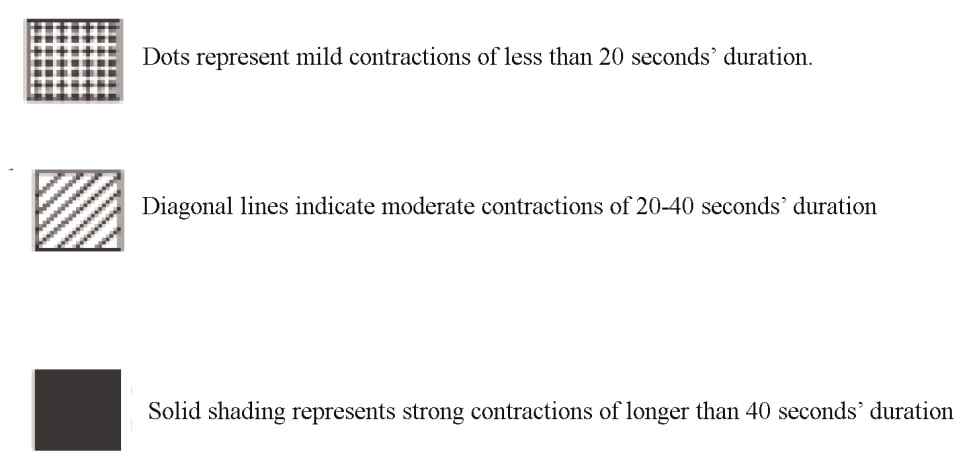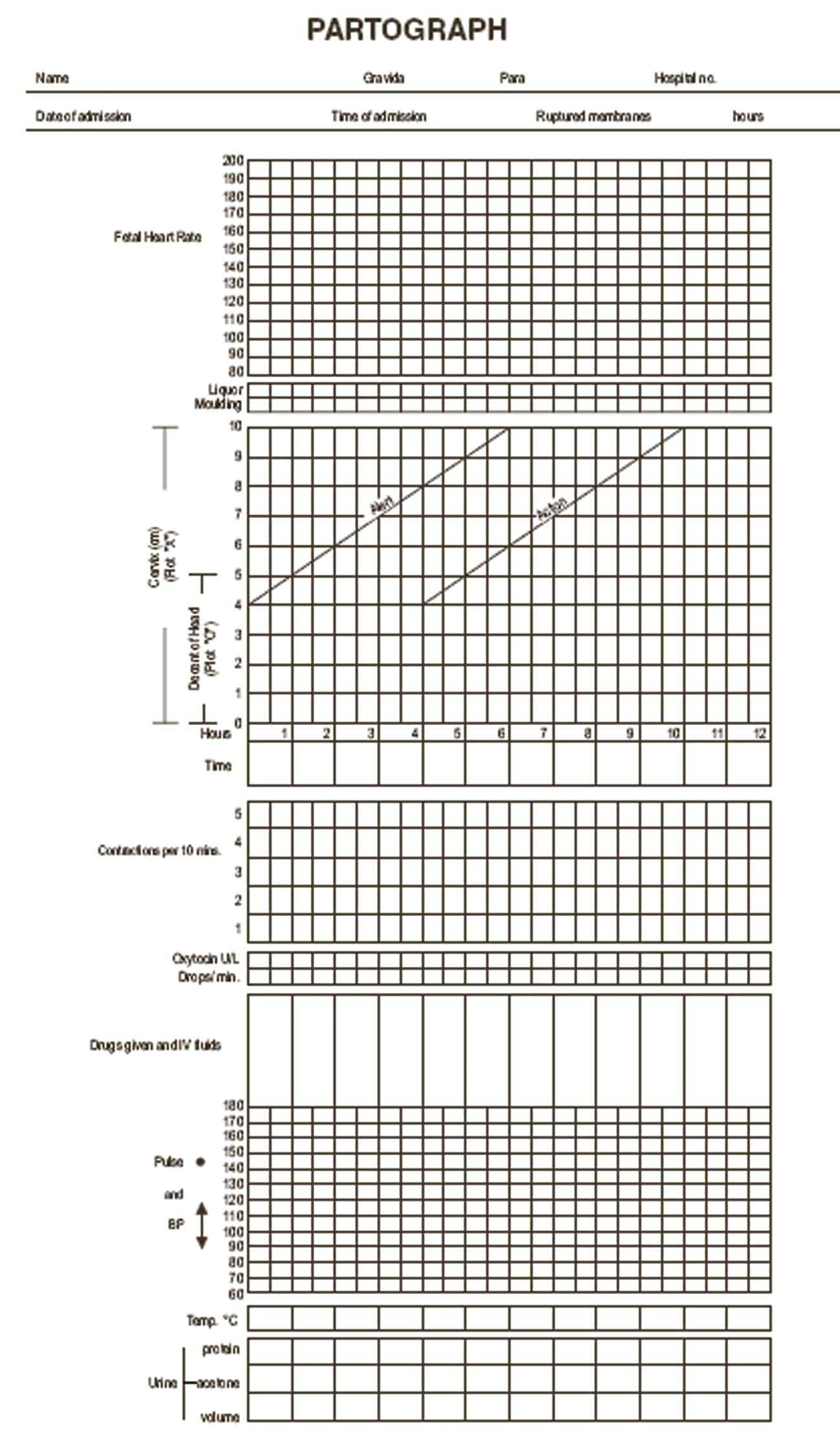The partograph is a composite graphical record used to measure the progress of labour, maternal and fetal condition in labour against time.
Why do you need to use partograph in measuring the progress of labour?
We need to use the partograph to monitor the progress of labour if it is the good or bad outcome, to diagnose early indicators of fetal and maternal distress and manage accordingly.
Partograph Sections
The partograph has two major sections called demographic and graphic sections. Refer to the figure 2.3 below to study each section of the partograph.
i) The demographic section: This is the section of the partograph were you record: name, gravidity, parity, admission date and time, the time of membrane ruptured. It is usually found on the top of the partograph paper.
ii) The graphic section: This is the section where you usually plot first and then join the plots later to monitor labour, fetal and maternal condition and interpret the data for further management. It includes the following:
- Fetal heart rate: the next part after the demographic section is the fetal heart rate graph. It is where you record fetal heart rate. It had a range that covers from 110-180 beats/min and recorded initially and every 30 minutes later.
- Liquor and moulding.
- Definition of moulding.
- Moulding is the over lapping of the fetal skull.
- Immediately below the fetal heart rate, there are two rows to gather:
- The liquor, cervical mucus with some blood.
- You should look whether there is an amniotic fluid rupture or not. If ruptured, you record it as "R."
- If it is not ruptured (intact), you record as I then
- You proceed to the condition of the amniotic fluid where you record C if clear,
- M if meconium is stained and
- B if blood stained. It is assessed initially and every 4 hours later.
- Below the liquor row is moulding, which is the extent to which fetal skull bone overlap over each other to accommodate maternal pelvis during child birth of the baby and it is measured initially and every four hours later on.
- Below moulding is cervical dilatation which is the measure of the diameter of the cervix in cm. You plot as "x" at this point is where you also plot descent of the head, which is how far down the child's head progressed into the maternal pelvis, and you plot as "0" you assess initially and every four hours. There are two rows at the bottom of this section of the partograph to write the number of hours since you began monitoring the labour and the time on the clock.
- Descent.
- Assess maternal condition.
- B/P, pulse rate and temperature.
- Next to cervical dilation section is where you record the intensity of the contraction per 10 minutes initially and every 30 minutes.
- Strength and duration of contraction.
- You may use dots for weak contraction lasting 20 seconds, the diagonal separated line for moderate contraction lasting 20-40 second and shading for strong uterine contraction lasting >40 seconds.

Fig. 2.3. The different shading on the squares you draw on the partograph indicates the strength and duration of contractions.
- Fetal heart beat takes every 30 minutes during the 1st stage and after each contraction during the 2nd stage of labour.
- Below that, there are two rows for recording administration of Oxytocin during labour, and the amount was given.
- The next area is recorded drugs were given, and IV fluids are given to the mother.
- Below that is where you record the maternal vital sign i.e. the blood pressure and pulse with a range value of 80-160 mm Hg. There is also where you record maternal temperature in OC.
- At the very bottom, you record the characteristics of the mother's urine, protein, acetone, volume.
At the section of cervical dilatation and fetal head descent, there are two diagonal line i.e. action and alert line.
Alert line started at 4 cm goes through to maximum cervical dilation of 10 cm with expected cervical dilation of 1cm per hour. The partograph shifts to the left if the labour progress is good then attend her at your level.
The action line is found parallel to and 4 hours below the alert line these two lines are designed to warn you to take action quickly if the labour is not progressing normally. The partograph shifts to the right if the labour progress is bad immediately refer to the health centre or the hospital for further management.
The figure below shows a typical example of partograph.

Fig. 2.4. The partograph showing where to enter the patient's identification details at the top and the graphic component below.


